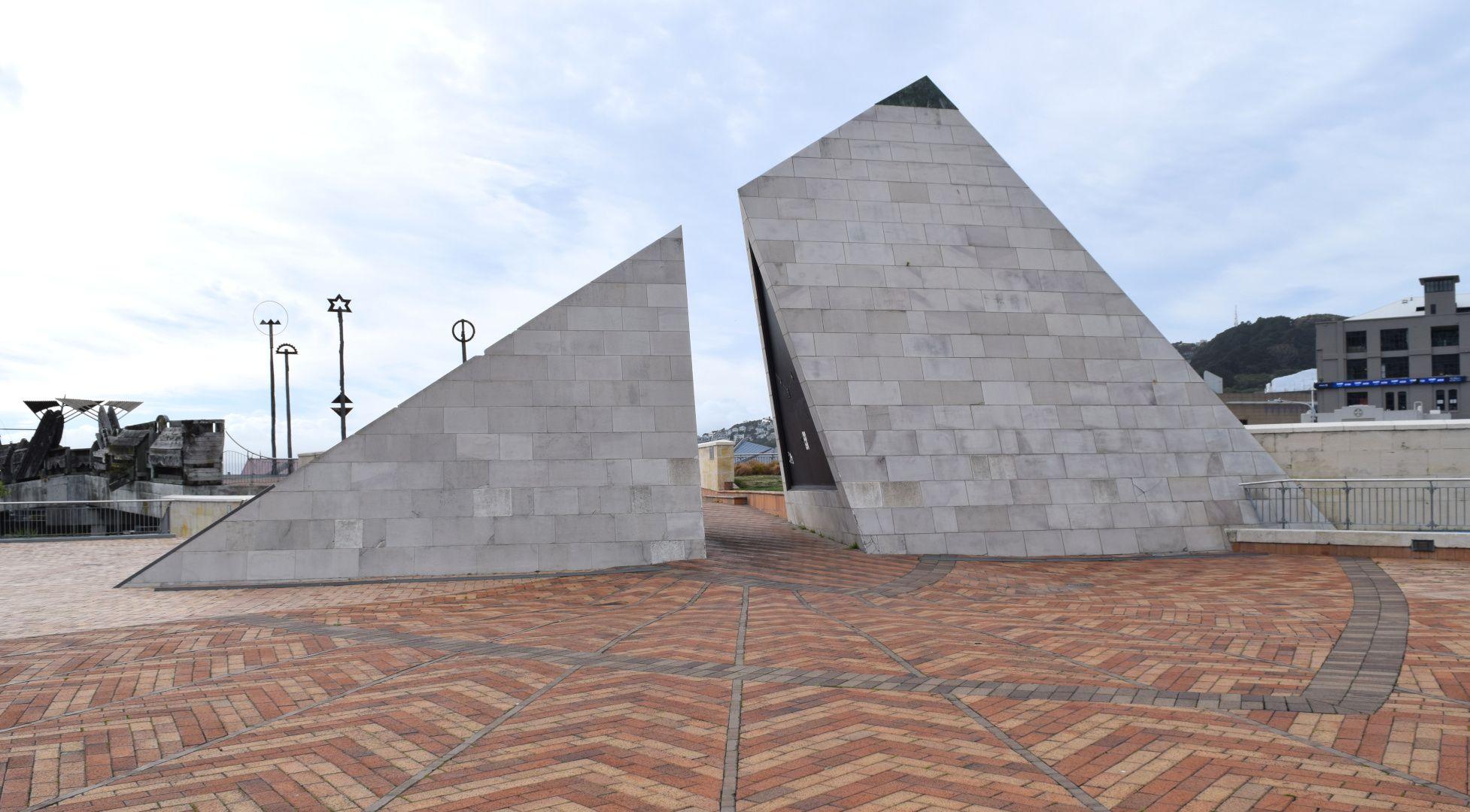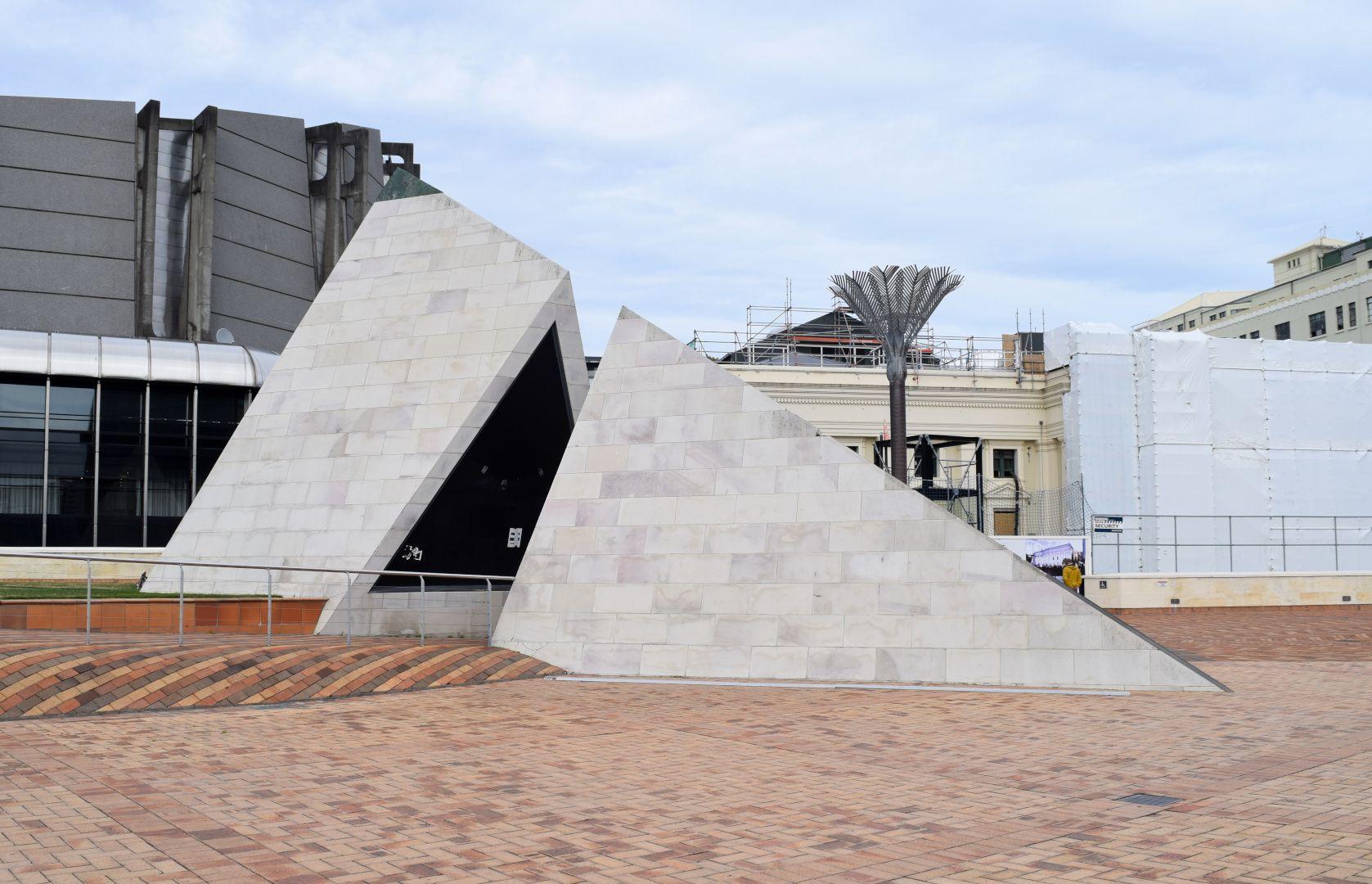Te Aho a Maui
Rewi Thompson
Type
- Sculpture
Medium
- Brick
- Marble tile
- Pounamu Greenstone
Dimensions
- H8650 x W18,010 x 7370mm (incl. central cutting for walkway)

Rewi Thompson, ‘Te Aho a Maui’ (1991), Civic Square, Wellington
Image: Bronwyn Holloway-Smith, Public Art Heritage Aotearoa New Zealand, 2024


- DETAILS
- MAP
Description
Te Aho a Māui comprises a split-form pyramid topped with pounamu/greenstone sourced from the South Island Te Waipounamu. The pyramid represents a mountain meeting the sea–a symbol for Te Waipounamu, the South Island–while the paving represents Māui’s fishing net, in a nod to the well-known Māori legend of Te Ika-a-Māui.
The work was created as a component of the Capital Discovery Place project, a collaboration between Rewi Thompson and Athfield Architects that was one of three related, but distinct, projects to develop the Civic Square area in the early 1990s. The other two projects were Civic Square (Athfield Architects), and the City-to-Sea Bridge (1993) (Rewi Thompson & John Gray, with Paratene Matchitt).
Together, all three projects form a coherent whole, designed and completed between 1990 and 1994. “It was correct that the various elements of the Civic Square, Capital Discovery Place and the City-to-Sea Bridge should and do work as a whole, and inevitably involved different designers, funders and clients who needed to coordinate and cooperate. Rewi played an important role in connecting these two parts of the city [City to Sea Bridge and Capital Discovery Place] and architecturally leading this representation of the Māori creation story.” (source: John Gray interview with Sue Elliott, c.2023)
The University of Auckland Architectural Archive contains several paving design sketches that Thompson made for Te Aho a Māui, showing early arrangements of the bridge’s pyramid form with the metaphorical net pattern and fishing line creating a complicated geometric composition on the elevated plaza (see ‘Rewi’, p.178).
Ken Davis, who was one of the project architects for Capital Discovery Place while working for Athfield Architects, recalls working on the pyramid form: “It was really complex because it’s a steel frame that supports this oddly shaped pyramid with a slice in the middle.” (see ‘Rewi’, p.181).
A plaque installed with the work reads “Maui is the legendary figure who fished up the North Island. The design is symbolic of the land meeting the sea. Te Aho a Maui (Maui’s line) is represented by the Terra-Cotta paving unravelling from the mountain to the sea. The mountain and adjacent waterfalls represent and reflect the complexity of New Zealand’s heritage.”
See also:
